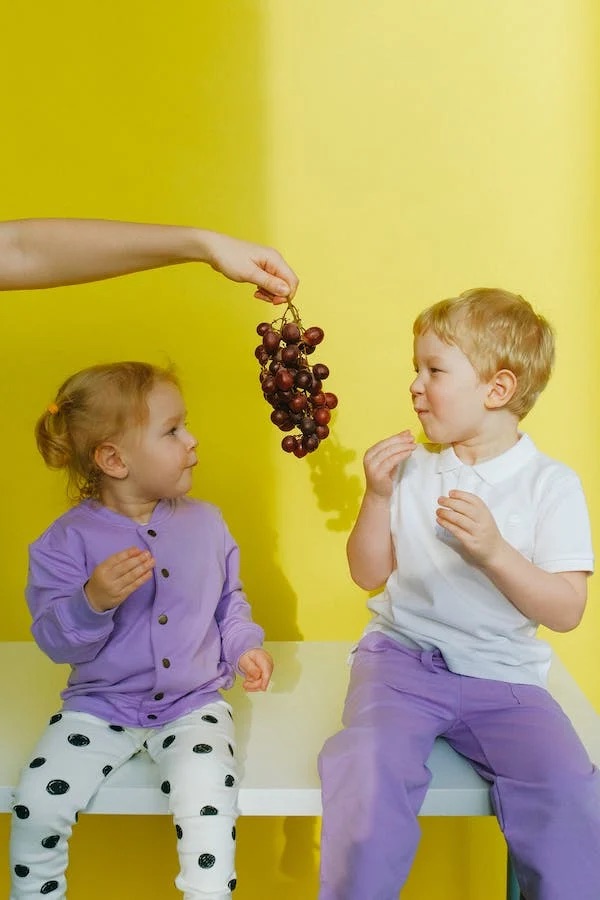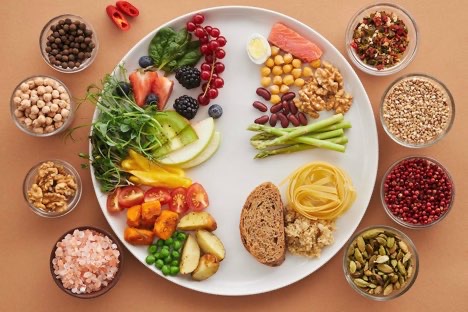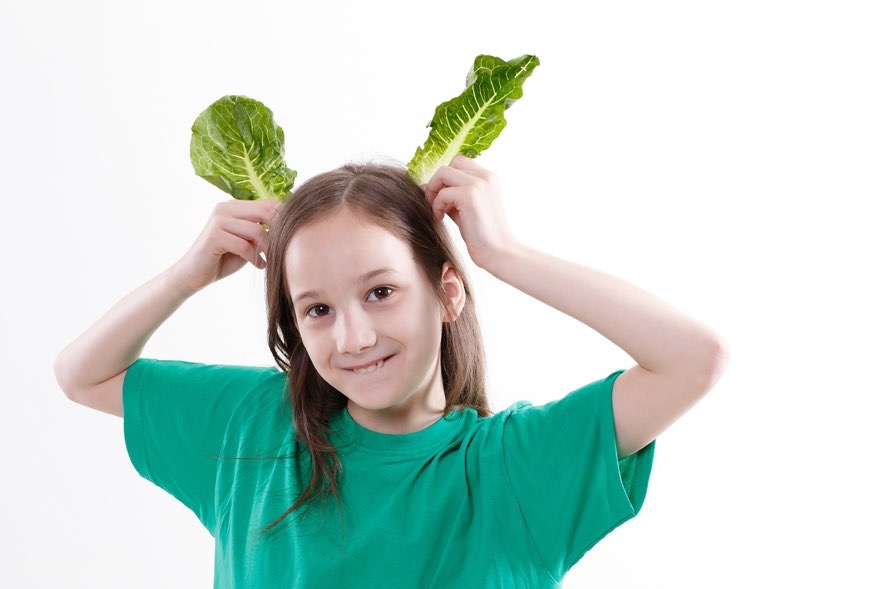Most parents are clueless regarding which food is rich in fibre for kids. So no wonder why so many kids are suffering from constipation lately. A little knowledge about choice of foods makes a great deal of difference in health.
Here in this post we will talk over some day-to-day foods rich with fibre for kids. We will also elaborate how fibre rich food can be incorporated into a child’s diet easily.
Types of nutrient in food
Diet has various components, which are called nutrients. Depending on biochemical composition these nutrients are grouped into 6 basic types as below.
- carbohydrates
- Fat
- Protein
- Vitamins
- Minerals
- Fibres
First five nutrients are talked about the most. But, parents might not be knowing, how crucial is dietary fibre for kids! Foods rich with fibre not only curb constipation, but also provide innumerable other health benefits.
What are fibres
Dietary fibres are basically thread like components of food, derived from plants. Have you ever observed a soft white ball of cotton keenly? It seems as if very fine threads are coming out of it. Fibres in food are more or less similar.
In scientific term, fibres are nothing but indigestible poly-saccharide. This means these are chemically like carbohydrate ( i.e, polysaccharide ). However we human can not digest fibres. Consequently these passes through gut unaltered, giving rise to bulk of stool.
Furthermore, because fibre can not be digested or absorbed, it doesn’t produce energy. Wherefore it has almost nil calorie count. That is why dietary fibre is labelled as non nutrient. This is yet another plus point of fibre.
Due to its unique characteristics, there are multiple health benefits of dietary fibre in a child.
How much fibre should a child take per day ?
An adult ought take 20-40 grams of fibres per day. As per latest guideline of FDA, daily fibre necessity is around 28 grams per day ( for an average person having 2000 kcal per day ). Which is like taking 6-8 gram of fibres per each meal and 3-4 grams of fibres per each snack.
For a child fibre requirement is calculated by 3 methods.
- As per body weight ( old method by AAP*)
- As per age of child ( new method by AAP*)
- As per energy consumption ( by FDA**)
*AAP – American Academy of Paediatrics
**FDA – Food and Drug Association
1. As per body weight ( old method by AAP )
This method computes daily fibre requirement of a child relative to body weight. It says that a child should be taking a minimum of 0.5 gm of fibre / kg body weight/ day. This recommendation is proposed by AAP ( American Academy of paediatrics )
Thus for a 10 kg child minimum fibre requirement would be around 10*0.5 = 5 grams / day
2. As per age ( new method by AAP )
This method is the simplest and easiest method for fibre requirement calculation for kids more than 2 years of age. Hence it is also termed as AAP method.
This formula goes as below.
Minimum fibre required per day
= x + 5gm per day
Maximum fibre that can be consumed is
= x + 10gm per day
X = age of child in years.
Let’s take an example of a kid of 3 years old. His/her fibre intake should be between :
( 3 + 5 gms ) to ( 3 + 10 gms )
i.e. 8 gms to 13 gms per day
3. As per energy intake ( FDA recommended )
As per current dietary recommendations, a person should take minimum of 14 gm of fibre / 1000 k cal/ day. Maximum up to 38 grams/ day. This formula applies to both adults as well as children.

FUN FACTS ABOUT FIBRE
Ratio of grams of total carbohydrate to grams of fibre should be 5 : 1 or less in a food.
High fibre sources are those food which has more than 5 gm of fibres per serving. Whereas good fibre sources are those with 2.5 – 4.9 gm of fibre per serving.
The gap between recommended fibre intake and actual fibre intake is denoted as fibre gap.
FOODS RICH WITH FIBRE THAT ARE SOLUBLE
Have you ever soaked fenugreek seeds or powder in water for few hours? It brings about a gel like substance. This is because fenugreek is packed in soluble fibres.
Let us find out below, what are some common foods rich with fibres that are soluble.
1. Cereals -
Some cereals have ample soluble fibres. Oats, Barley are classic example of such cereals.
These can be given in the form of sweet porridge ( kheer ) or salty porridge ( khichdi ). Fruits and vegetables can be put in here, while preparing porridge, for e.g. oat apple porridge.
2. Millets -
Generation of our grandparents had millets as integrant part of diet. No wonder they lived longer and healthier. Millets are nutritious, as are abounding with not only fibres, but also calcium, iron, other minerals and vitamins. Given that, millets are regaining popularity these days.
Millets are in general small grains derived from wild grasses. Not many people know that these grasses are naturally pest resistant and don’t need any pesticide. Thus millets are truly organic. Besides millets are gluten free as well.
Few examples of millets for kids are finger millet ( ragi ), pearl millet ( bajra ), Kodo millet ( Kodo ), Sorghum millet ( jowar ), Foxtail millet ( Korra ). These millets can be given as roti/chapati, pancake, dosa, porridge etc, whatever suits your kid’s palate.
If your child is able to tolerate and digest millet without getting gaseous distension of tummy or loose motion, then it is a superfood for him/her.
3. Quinoa and Amaranth-
If you have been to supermarket lately to buy grocery, you must have seen Quinoa and Amaranth. Quinoa and Amaranths are analogous to millets in appearance and nutrition
Both Quinoa and Amaranth resemble millet grains but in fact these are not grains but seeds. Thus are categorised under ‘pseudo-cereals’. Both are dense in proteins, fibres, minerals etc.
Akin to millets, Quinoa and Amaranth are gluten free. So can be ingested in celiac disease ( a disease where kid can not tolerate gluten based foods like wheat, barley, rye and triticale etc )
Simplest way to prepare Quinoa or Amaranth for a busy mother is to boil it with milk. While introducing it to a child’s diet, add it in a small amount to diet for 2-3 days and observe. If everything goes fine then continue.
4. Fruits -
Fruits like guava, prune, avocado, kiwi, blue berry, black berry, fig are richly packed with fibres. Besides apple, banana, orange, peach, papaya, mango, avocado need special mention too.
Fruits should better be either steamed/ mashed or uncooked/ cut. If given in the form of juice, fibre content declines drastically.
5. Vegetables -
Vegetables of Brassica family like broccoli, cauliflower are plentiful in soluble fibres. Other vegetables in particular cucumber is good too, when it comes to fibre and water content
A locally grown vegetable that is lesser known and needs a spotlight here is sweet potato. It can be fed as steamed or roasted or baked form.
Special note : Vegetables can be cooked along with cereals or as stew. If cooked solo then better are steamed. If vegetables are boiled alone then utilise that left out water to cooked lentil or cereals.
6. Lentil or legume -
Pulses and legumes are important add on to diet as are copious in soluble fibres as well as proteins.
7. Beans and Peas -
Just like legumes, beans ( eg Kidney beans) and Peas ( eg Chick peas ) are important source of protein and fibres. Steaming preserves majority of nutrients in beans and peas.
8. Psyllium-
Psyllium is other wise known as isaphgula. It is derived from a shrub, that commonly grows in India. Husk of psyllium has laxative property. ( Laxatives are substances that relieve constipation )
Warning :
Psyllium or isaphgula should never be given for long term relief of constipation. It should not be self administered by parents to kids without doctor’s advice. This is because psyllium has its own after-effects as well, if dose is not titrated properly.

FOODS RICH WITH FIBRE THAT ARE INSOLUBLE
Insoluble fibres give rise to roughage of food. These make stool bulky and hence help in smooth bowel movement. Ergo, these insoluble fibres relieve constipation. Below are foods that you should add to child’s diet as sources of insoluble fibres.
1. Skin of fruits and vegetables -
Fruits and vegetables when taken unpeeled are better for bowel. That’s because fruit / vegetable skin comprises of insoluble fibres.
2. Few vegetables-
Vegetables namely Carrot, Beet etc. have insoluble fibres too. These store vitamin A and other vitamins also.
3. Leafy vegetables -
Leaves like spinach, celery and kale have substantial insoluble dietary fibres. Also lettuce, cabbage etc have fibres that are insoluble.
4. Whole wheat grains and products -
Whole wheat products for instance whole wheat flour and whole wheat bread are excellent in terms of insoluble fibres. Grains like red rice or brown rice, red flaked rice, multigrain dalia etc. are storehouse of insoluble fibres too.
5. Nuts
Nuts surplus in insoluble fibres are chest nut, hazelnut, almond, pistachio etc. Besides walnut, cashew and peanuts are also decent source of insoluble fibres. In addition nuts supply plant based proteins as well.
6. Corn
Products related to corn for instance popcorn is jam-packed in insoluble fibres.

Soluble fibre should be roughly 25% of total fibre in diet
Food deficient in fibre
.Here are some foods remarkably depleted in fibres.
- White flaked rice, White rice
- Products made out of Maida ( refined flour ) eg. Biscuit, noodles, Maggi
- Packaged foods with empty calories- chips, cold drinks
- Junk foods like french fries, pizza , burger etc.
Conclusion
When you take fibre in excess of what is required, it may bind to minerals and vitamins and hinder their absorption.
One more things to keep in mind that, when a kid is given fibre in diet, s/he should be given sufficient water too to drink.
Bottom line is add more vegetables, fruits, whole grains, beans and nuts to your kid’s diet, to keep him/her healthy. Instead of giving all fibres at once, give it in small portions throughout day for better results.
Caution
All the informations provided here are for educational and awareness purpose only. Kindly do not use these as alternative to medical consultation.
To know in detail about fibre content of individual food read below article.





A great post with detailed explanation of an essential diet component. Thank you so much, Maninee, for taking out time and sharing your knowledge.
Thank you so much. I am pleased to know that it’s helpful.
Very interesting,informative and detailed write-ups. Congratulations.
Thank you so much for appreciation.
Nicely explained facts,very informative,thankyou.
I am glad that it helped